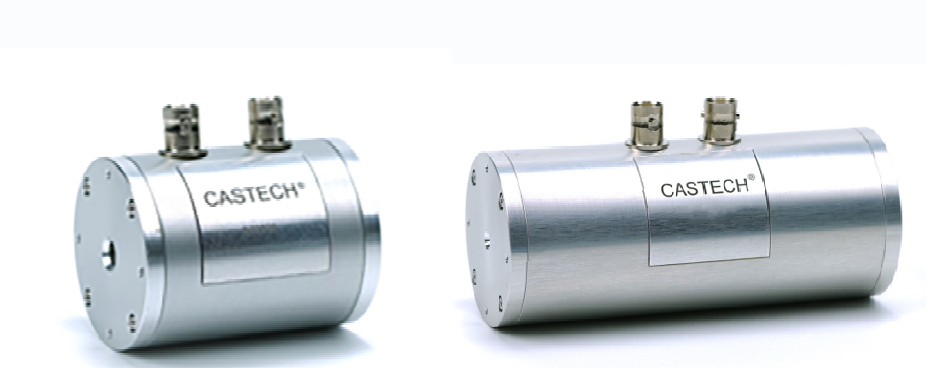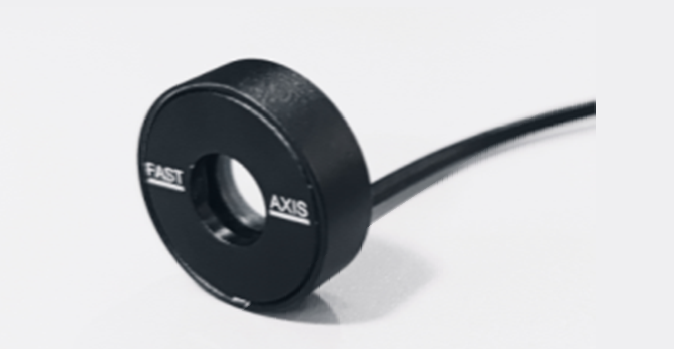
"Master" of Phase Control — Phase Modulator
Source:
Publish time:
2025-10-22
"Master" of Phase Control — Phase Modulator
In our previous article, "Light Follows My Command, Controlled at Will", we briefly introduced the types of laser modulators and provided insights into intensity modulators. Thank you all for your kind feedback and support—your suggestions will help us improve continuously and deliver even more engaging content on laser components. Without further ado, today we dive into another crucial type of laser modulator: the phase modulator.
What is "Phase"?
To understand phase modulators, we first need to introduce the concept of phase: phase is a measure that describes the state of a periodic wave at a given moment, typically expressed in units of degrees or radians (one complete cycle being 360° or 2π).
Due to the wave-particle duality of light, light can be viewed as both a particle and an electromagnetic wave. The phase of light can be described as the position of a photon at a specific moment within its cycle during propagation (whether at a wave peak, trough, or somewhere in between).

What is a Phase Modulator?
As the name suggests, a phase modulator is a component that adjusts the phase of light. Based on the wave equation of light, a light field with frequency f can be represented by a complex number:
![]()
Where U(x,y,z)=u(x,y,z)exp[-iΦ(x,y,z)], and u and Φ represent the amplitude and phase of the light field at coordinates (x, y, z), respectively. This shows that, just like intensity modulation, phase modulation is a fundamental property of a light beam.
Phase modulators are widely used in various applications, such as:
* Encoding advanced code formats in optical communication.
* Generating keys in quantum communication.
* Suppressing stimulated Brillouin scattering in the SG-II (Shenguang-II) laser facility.
* Canceling phase shifts in fiber-optic gyroscopes.
I believe you now have a basic understanding of phase modulators. Next, let's get into the specifics and discuss three main types of phase modulators:
Electro-Optic Phase Modulator
An electro-optic phase modulator is a device that utilizes the Pockels effect to modulate the phase of a light beam. When a voltage is applied across an electro-optic crystal, the crystal's refractive index changes in proportion to the applied voltage. By modulating this voltage, the phase shift of the light beam passing through the crystal can be controlled.
Electro-optic phase modulators can be divided into two categories: optical waveguide and bulk phase modulators. The former has a fiber-coupled output, while the latter has a free-space output.
1. Optical Waveguide Electro-Optic Phase Modulator
The main component of an optical waveguide electro-optic phase modulator is an optical substrate containing a waveguide and thin-film electrodes. Lithium niobate (LiNbO₃) crystal is typically used as the waveguide material. The resulting modulators feature very low chirp, high modulation bandwidth, high extinction ratio, and excellent stability.
Light is coupled into the waveguide. When an external electric field is applied along the z-axis, the phase shift of the light beam is given by the formula:

Where:
* n0 is the refractive index.
* γ33 is the electro-optic coefficient.
* Γ is the overlap integral factor, representing the interaction strength between the optical wave field and the applied electric field (with a value between 0 and 1).
* l is the electrode length.
* G is the electrode gap.
* λ is the wavelength of the input light.
* V is the applied voltage

Schematic Diagram of an Optical Waveguide Electro-Optic Phase Modulator
Owing to its significant advantages in single-channel bit rate, system spectral efficiency, and transmission distance, the optical waveguide electro-optic phase modulator has become an important class of components in optical communications. Modern phase modulators have achieved modulation frequencies up to 100 GHz with operating voltages below 6 V, and are evolving toward higher frequencies, miniaturization, and lower power consumption.
2. Bulk Electro-Optic Phase Modulator
Also known as a free-space phase modulator, the bulk phase modulator primarily consists of bulk electro-optic crystals and metal electrodes. Common crystal materials include lithium niobate (LN), potassium dideuterium phosphate (DKDP), and beta barium borate (BBO). With proper circuit matching, GHz-level modulation frequencies can be achieved.
Electro-optic phase modulators are widely used in high-precision fields such as information communication and biomedical applications. CASTECH's high-speed electro-optic phase modulators employ high-quality optical components and unique packaging technology. When used in conjunction with a matching driver, they can achieve phase shifts greater than 1λ, making the products suitable for integration into precision laser component processing systems.



CASTECH's Single-Crystal and Double-Crystal High-Speed Electro-Optic Phase Modulators
Photoelastic Modulator
A photoelastic modulator is a phase modulation device based on the birefringence effect and the photoelastic effect. The photoelastic effect refers to the change in the optical properties (refractive index) of a medium when it is subjected to elastic stress or strain, thereby affecting the propagation characteristics of light within it. Photoelastic modulators built on this principle typically consist of a piezoelectric element and a light-transmitting element. They utilize the converse piezoelectric effect of the piezoelectric material to convert periodic high-voltage signals applied to the piezoelectric crystal into vibrations. The generated ultrasonic waves propagate into the light-transmitting medium, inducing resonance and periodically altering its refractive index. This causes the originally isotropic light-transmitting medium to exhibit stress-induced birefringence, resulting in periodic phase retardation of the light beam and achieving the goal of phase modulation.
If the photoelastic modulator is placed between a polarizer and an analyzer with orthogonal polarization directions, and the modulator's own vibration principal axis is oriented at a 45° angle to the polarizer's polarization direction, linearly polarized light passing through the modulator will undergo periodic changes in state: linear polarization → elliptical polarization → circular polarization → elliptical polarization → linear polarization.

CASTECH's One-Dimensional and Two-Dimensional Photoelastic Modulator Products
CASTECH's photoelastic modulators offer vibration in either a single specific direction (1D modulators) or two directions (2D modulators), allowing customers to select products based on their required phase delay variations. These products are widely used in fields such as astronomical observation, polarization measurement, spectrometers, quantum sensing, and magnetometers. Upon release, the series gained significant recognition within the industry, winning the "WICO Award • OFweek 2020 Innovation Award in Laser Components, Accessories, and Systems," marking a breakthrough in domestic production of such devices.

Liquid Crystal Phase Modulator
A liquid crystal (LC) phase modulator consists of a transparent liquid crystal cell filled with an LC molecule solution. Transparent ITO electrodes are coated on the substrates at both ends of the cell to apply voltage to the LC molecules. There is a gap between the substrates controlled by spacers. Due to the electrically controlled birefringence effect of LC molecules, in the absence of applied voltage, the LC molecules remain in their natural state, with their alignment direction determined by the alignment layer (PI). The phase delay in this case is given by:
![]()
Where:
* t is the thickness of the LC layer (cell gap).
* λ is the wavelength of the transmitted light.
* △n is the birefringence of the LC material.
When the applied voltage exceeds the threshold voltage, the LC molecules reorient according to the effective value of the applied voltage, which changes the refractive index of the LC material. To prevent charge accumulation that could damage the waveplate, the applied voltage must be alternating current (AC) with no direct current (DC) bias.

Schematic Diagram of Liquid Crystal Molecular Alignment Changes

Schematic Diagram of Liquid Crystal Modulator Structure

Liquid crystal phase modulators feature large clear apertures and broad wavelength bandwidths. The addition of a temperature control module can further enhance product stability.
There are many types of phase modulators, and the three categories mentioned above represent just the tip of the iceberg. Those interested in learning more can leave messages in the background, and the editor will look for opportunities to share more detailed information in future articles. You can also tell the editor about topics you're interested in—perhaps the next article will cover exactly what you want to know!
To be continued...
Related Information




